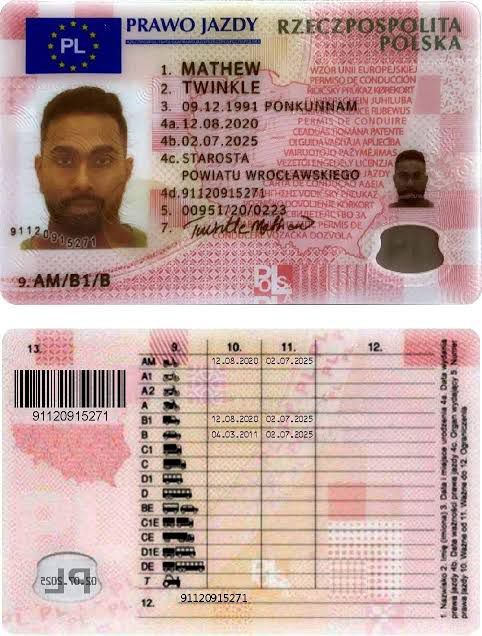Understanding Driving Licenses: Types, Requirements, and Frequently Asked Questions
Driving is a fundamental element of contemporary life, and acquiring a driving license is a vital turning point for many individuals. This short article explores the different types of driving licenses offered, the requirements to acquire them, and answers typically asked questions connected to the topic. An educated point of view on driving licenses can help people understand the importance of picking the appropriate kind of license to fulfill their requirements.
Types of Driving Licenses
Driving licenses can differ in between countries and areas, but they typically fall into a number of major categories. The following table summarizes the most common kinds of driving licenses, including their functions and typical restrictions.
| Kind of License | Description | Common Restrictions | Eligibility Age |
|---|---|---|---|
| Learner's Permit | Enables novice chauffeurs to practice. | Must drive with a licensed grownup. | 16-18 years of ages |
| Class C License | Standard license for passenger automobiles. | No constraint on number of passengers. | 18 years or older |
| Class A License | Commercial license for large cars. | Need to abide by more stringent regulations. | 21 years or older |
| Class B License | For driving buses and larger vehicles. | May require special recommendations. | 21 years or older |
| Bike License | For operating motorbikes. | Must wear a helmet; differs by state. | 16-18 years old |
| International License | Allows legal driving in foreign countries. | Must have a legitimate domestic license. | 18 years or older |
Learner's Permit
The student's authorization is the primary step for numerous individuals venturing into the world of driving. This permit allows novice chauffeurs to practice driving under supervised conditions, generally needing a licensed grownup over a particular age to accompany them in the automobile.
Class C License
The Class C license is the most commonly held driving license, permitting people to run basic passenger vehicles. This license generally has actually fewer restrictions compared to other categories.
Class A and B Licenses
Class A and B licenses are necessary for operating commercial vehicles. These licenses require special training and screening, making sure that motorists are equipped with the skills required for maneuvering bigger and more intricate automobiles safely.
Bike License
People interested in riding motorbikes need to get a motorcycle license, which can require extra training and screening. sprawdzone kupowanie prawa jazdy , such as helmets, is typically mandated by law.
International License
An international driving license enables people to drive in foreign nations, however it is essential to have a legitimate domestic driving license in conjunction with the international authorization.
Requirements to Obtain a Driving License
The requirements for acquiring a driving license can vary significantly by jurisdiction. Nevertheless, there are common steps and requirements that the majority of applicants will experience. Below is a list of basic requirements:
Age Requirement:
- Minimum age varies; student's authorizations are frequently issued at 16, while complete licenses may need applicants to be 18 or older.
Vision Test:
- Most jurisdictions need applicants to pass a vision test to make sure safe driving capabilities.
Composed Test:
- New chauffeurs should pass a written exam that covers traffic laws, roadway indications, and safe driving practices.
Driving Test:
- Practical driving tests are carried out to demonstrate an applicant's ability to run a vehicle safely under various conditions.
Charges:
- Payment of application and screening costs is usually needed.
Proof of Identity:
- Applicants should supply legitimate identification, such as a passport or birth certificate, together with evidence of residency.
Adult Consent (for minors):
- Parental or guardian permission is typically needed for applicants under the age of 18.
Comprehending the different kinds of driving licenses and their associated requirements is essential for anybody aiming to drive legally and securely. Each license serves a distinct purpose, catering to different driving needs, from standard lorries to industrial transport and motorcycles. By meeting the necessary criteria and adhering to regulations, striving drivers can enjoy the flexibility of driving while guaranteeing their safety and the security of others.
Frequently Asked Questions (FAQs)
What do I need to bring when obtaining a driving license?
- You normally need to offer recognition, evidence of residency, and any needed application charges. Consult your regional DMV or licensing authority for particular requirements.
For how long does it require to acquire a driving license?
- The timeline can vary based on individual situations, such as how quickly one can finish the needed tests, and whether there is a backlog at the licensing authority.
Can I drive with a learner's authorization?
- Yes, however you must be accompanied by a licensed motorist and stick to restrictions set by your local laws.
What takes place if I stop working the driving test?
- You usually have the option to retake the test after a designated waiting duration, which differs by jurisdiction.
Is it essential to take a driving course?
- While not always mandatory, taking a driver's education course can be beneficial and is frequently needed for people seeking a student's authorization.
By being informed about the kinds of licenses readily available, the requirements necessary for acquiring one, and the related guidelines, potential drivers can navigate the procedure of getting a driving license with confidence.

